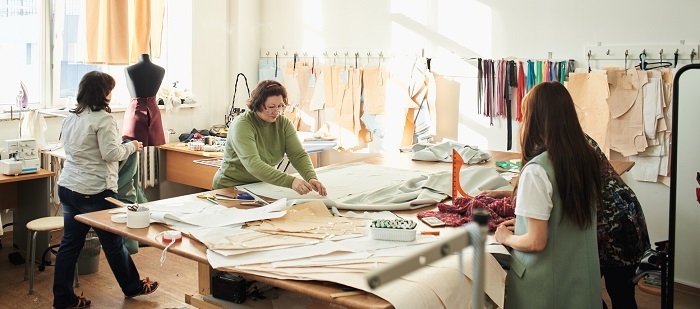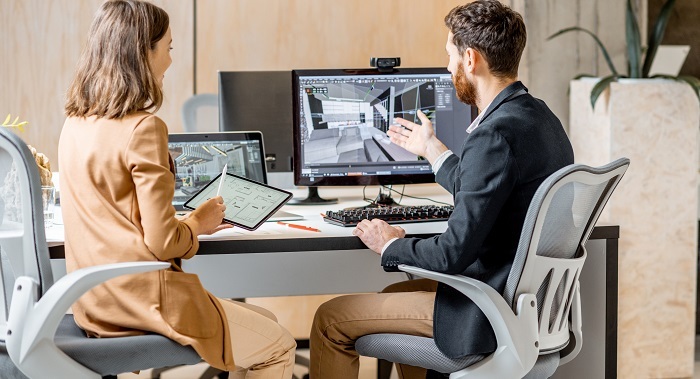

Today, fashion is regarded as a significant cultural, social, and economic manifestation. Despite the fact that humanity has used clothing for thousands of years and has learned along the way that it is not only for physical protection but also for adornment and distinction, many people still regard it as a futile topic. Design started to translate ideas into physical forms in a similar way to fashion, giving various elements form, color, and use.
Both seduce the consumer with equal ferocity. Fashion and design are industries that create the systems, objects, and ways of living that establish how time is translated into the signs that make up language. Modernity led to the understanding of design and fashion as areas of production that interact with and stimulate the capitalist system while also emphasising individuality, personalization, and a way of life. There is now more research on fashion, and the term has a number of definitions available. Ephemerality appears to be the primary quality in the majority of the authors’ works, albeit some single out one or another.
Roles of designers can be understood through the following terms
In order to create fresh looks for their target audiences, fashion designers use creativity. In order to create unique, cutting-edge designs, high-end fashion designers use more inventiveness. In street fashion, when clothing is mass-produced at a low cost, most fashion designers are employed. To create styles that are marketable for their clients, these fashion designers look to the best-selling items from the previous season as well as runway presentations and current trends.

The number of tops, bottoms, and dresses designated by the inventory planning and merchandising teams is designed by them, using their choice of colours and fabrics.
To produce unique pictures that are printed on clothing, graphic designers blend hand drawing and computer-aided design.

In order to create visually appealing graphics, graphic designers use their strong sense of colour and design coherence. They can start by hand drawing and then transferring it into the CAD software, but they typically build designs with CAD systems. To produce a workable design, graphic designers also need imagination. They can often only use eight colours in production; therefore, employing fewer colours will result in cost savings.
Designs that can be printed on or woven into a fabric are created by textile designers by hand-illustrating or using CAD software. To cover the fabric yardage with the design, textile patterns are created as repeats.

Textile designers can work independently or for organisations like clothing brands or textile manufacturers. To create textile designs that complement clothing styles, seasons, and customers, they collaborate closely with fashion designers and merchandisers. For their products, textile designers also conduct trend research and forecasting to make sure their designs are current.
The creative director is in charge of choosing the general theme, colour scheme, and styling for a season’s worth of clothing. They might work for a clothing manufacturer or a fashion publication. In order to ascertain what popular colours and styles their customers will most likely buy, an apparel creative director conducts trend research and analyses high-level sales data.

They meet with senior designers at the start of each season to decide on the colour scheme, theme, sources of inspiration, and any important design elements they want to see in the collection. The creative director keeps track of the designs’ progress and coherence as they are being developed
Spaces where people live and work are conceptualised by interior designers. They frequently design different parts of a home, business, or other facility based on the particular preferences of a customer. A room’s or a building’s entire look is created by interior designers, who also choose the furniture, colour scheme, accessories, wallpaper, flooring, lighting, and décor. Businesses rely on interior designers to assist them in creating aesthetically pleasing and functional workspaces that reflect their brand.

When architects develop their concepts, interior designers may collaborate with them to help with the visual layout of entire rooms and structures.
Clothing designers provide the aesthetic and technical standards for any type of outfit, from haute couture to high-end fashion. They guarantee that a product is both useful and appealing.

Physical product designers are knowledgeable about the materials needed to build a product, as well as the target market and the product’s features. Before constructing the final product, they work with a tailor and other designers to build thorough blueprints and a prototype.
Although there are many different kinds of designers, a designer is fundamentally a professional who produces visual representations of concepts and ideas. Designers create distinctive solutions to meet the needs of various clients and customers while taking into account functionality, aesthetics, and other requirements. A better user experience or alternative outcomes are frequently achieved by editing and streamlining preexisting designs. Designers frequently work with people on the design team and outside it. Designers may work in manufacturing, marketing, the fashion industry, or product development, among other professions.
The design Industry is continuously evolving to meet the needs of new clients and attract new clients, making it the perfect vocation for ambitious people who thrive under pressure. Natural problem-solvers may have a greater chance of success in design since they can help customers visualise solutions and experiences. You can pursue your creative interests and ideas in many types of designer jobs, and you can even have a direct impact on how a project turns out.